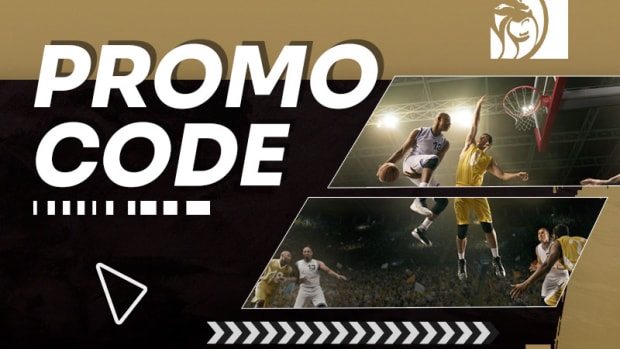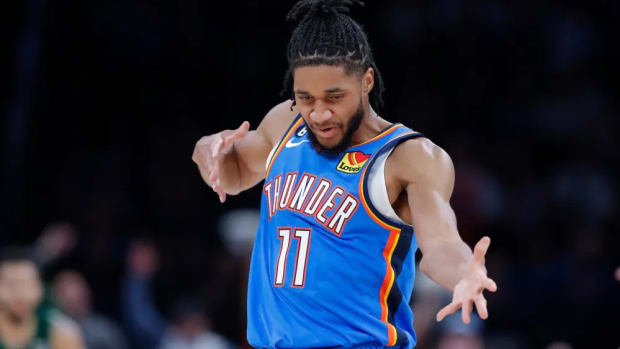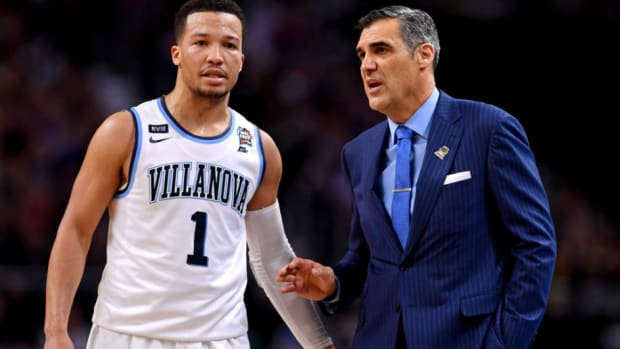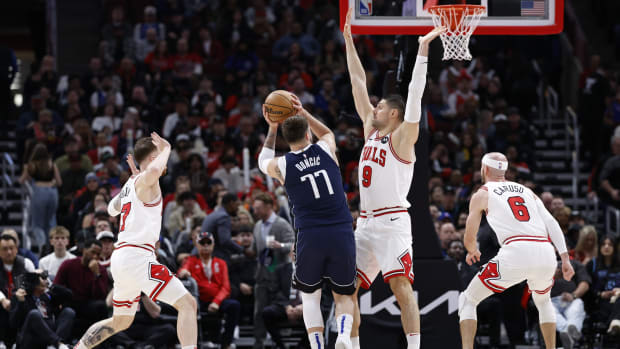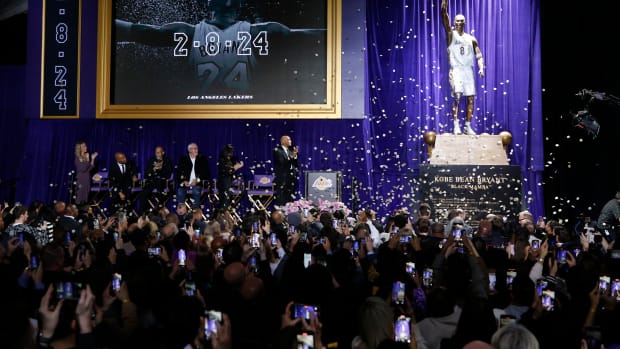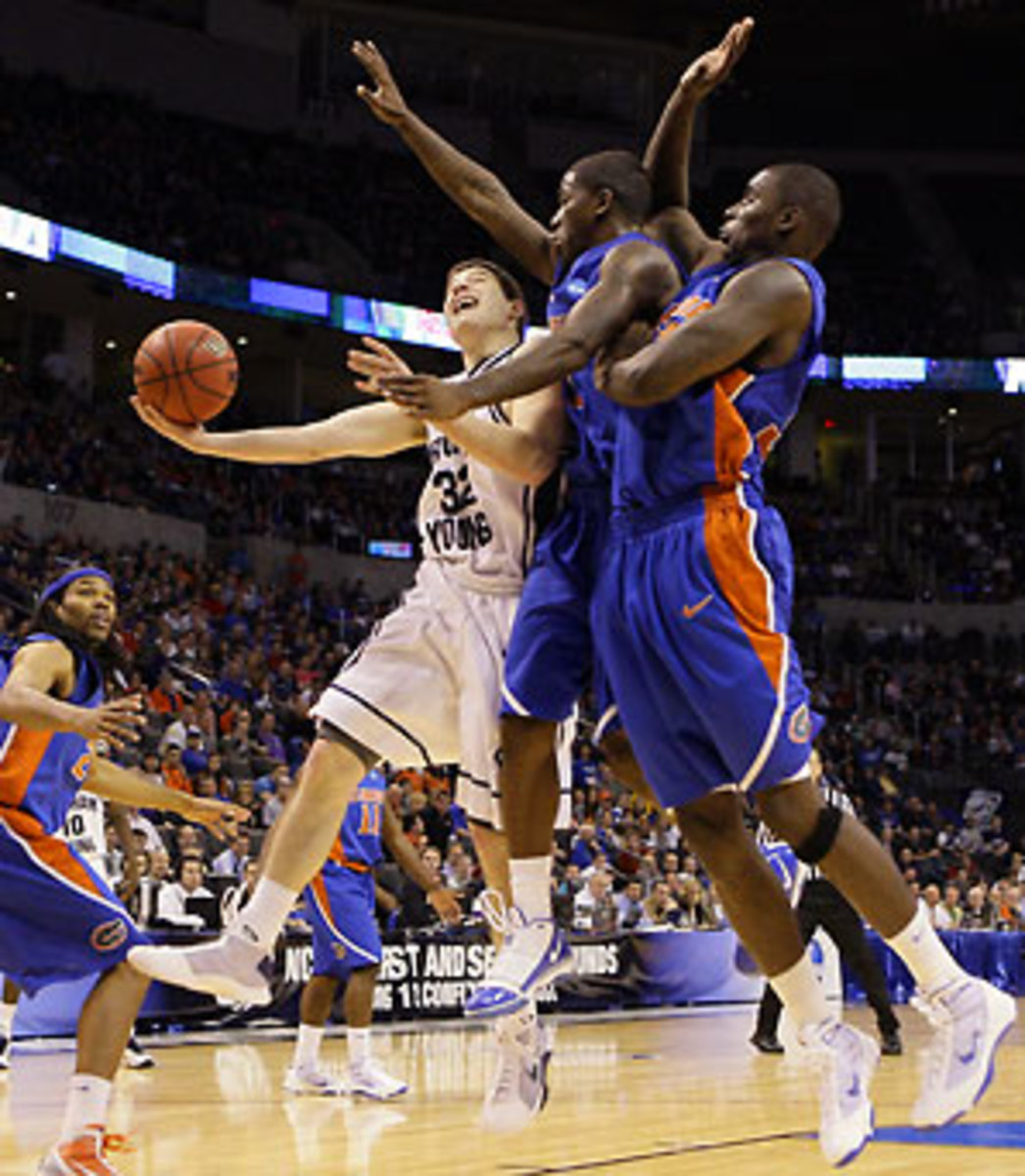
True stories of new draft deadline
The accelerated deadline might have been good for college coaches, who pushed for it in the first place, but it did a disservice to the draft prospects.
SI.com tracked down six players who navigated the process -- four who came back to school and two who turned pro -- and asked them to share their experiences. And what did we learn?
Few players were able to participate in extensive workouts. BYU's Jimmer Fredette was the only player with more than two workouts; he had four, although his family had to foot his hotel bill in New York. New Mexico's Darington Hobson stayed in the draft without doing a single workout, because he couldn't fit them in around classes. Morehead State's Kenneth Faried could only fit in one workout on the weekend, and went back to school because there was so much uncertainty, and only second-round feedback. (After he'd already made up his mind, though, his name showed up at No. 22 in the first round of an online mock draft.)
Nearly all the players felt hurried. Purdue's JaJuan Johnson worked out for the Rockets at the 11th hour (May 7), flew home to Indianapolis, met with his parents and made the call that same day. Fredette might have received a guarantee in mid-June, but because he couldn't get one in early May, he decided to go back to BYU. For those who already had their heart set on going pro -- like Xavier's Jordan Crawford -- the time crunch didn't matter much. For potentially undrafted players who wanted to get exposure -- like Penn State's Talor Battle -- the short window meant NBA teams weren't even going make time (or pony up expenses) to have them audition. There was a general sense of frustration, and a hope that, next time around, the deadline window will be widened.
The following are edited narrations of each player's draft-deadline retrospective:
Fredette opted to return to school for his senior year.
"The main reason I put my name in [the draft] was because I found out I'd be able to get a decent amount of workouts during that window. If I wasn't going to get any workouts, then it probably wouldn't have been worth it. And we're fortunate here at BYU -- we had all of our winter semester finals done before the draft window.
"I was able to go to Oklahoma City on Monday [May 3], Boston on Wednesday, then the Nets on Thursday, the Knicks on Friday, and I came home [to Glens Falls, N.Y.] that night. My dad came down on Thursday to meet me, and we stayed in a hotel near the Knicks facility; I had no idea until afterward that my dad ended up having to pay for our hotel room that night, though. Everything else on all the trips was great -- teams covered airfare, hotel, drivers. They'd drop me off at the hotel, tell me to order whatever I wanted from room service, and pick me up in the morning to go to the workout.
"In Oklahoma City, I went against Marquez Haynes, from Texas-Arlington; in Boston, I was there with Jordan Crawford from Xavier, JaJuan Johnson from Purdue, and they had some local kids from Northeastern there, too. Jordan and I flew to New Jersey together and I worked out with him there again, along with Eugene Harvey from Seton Hall. At the Knicks workout, the other point guard there was Bobby Maze from Tennessee. I kind of tweaked my left quad during a sprint early on in the Knicks workout, so we didn't even start the basketball stuff. It got cut short.
"As for feedback, it was weird -- all of the teams told me the same thing: that I could go in the 20-40 range. Those were all teams who were looking for point guards and had picks in that range, so I trusted it. I was looking for a first-round guarantee in order to stay in, but no one could give me one, because it was so early in the process, and so much could change between May 8 and the draft.
"If I had been working out for teams in June, when the draft isn't too far away, someone might have been able to give a guarantee at that point. In this setup, I had to go through four workouts in five days, which was grueling, and then make up my mind."
Hobson remained in the draft and plans to sign with an agent soon.
"The first thing I did was get that report about my stock back from Stu Jackson [the head of the NBA's competition committee], and I liked where I was at. For the rest, I really just went through my coaches, coach [Steve] Alford and Craig Neal. [Neal] coached in the NBA, so he still knows a lot of people there, and I liked what I was hearing -- that some people had me in the middle of the first round, some had me late in the first round, and some had me early in the second.
"I didn't do a single workout for an NBA team during the deadline window, though, because to stay on track to graduate [he's three-fourths done], I needed to finish up everything I had to do in school. And when I put my name in, I was pretty sure I was staying in, so I didn't feel like I had to rush into workouts right away on [April] 29th. But if I was really considering the possibility of going back to school? It would have been hard for me to work out at all during that week -- because with the new rules, that Thursday and Friday [May 6-7] would have been the only time I had available.
"Now that I am in the draft, I have a bunch of workouts scheduled. I'll be with the Pistons on Friday, the Rockets on Saturday, then the Chicago combine, and a big group workout in Minnesota after that. Those are the four main ones, and the goal there is to answer whatever questions, or doubts, people have about me -- mainly, whether I have a consistent jump shot or can guard the wing at the NBA level."
Johnson opted to return to school for his senior year.
"I didn't have finals during that second week, so I was lucky enough to be available for workouts -- because I was told that if I missed any classes or finals for workouts, I could get suspended for games. Coach [Matt] Painter was gathering information for me. We were hearing late-first, early-second round from people -- but getting the actual workouts scheduled was a struggle within itself, because a lot of teams didn't even want to do workouts before the [May 8] deadline.
"I got invited by two teams: Boston, on Wednesday, and then Houston, on Friday. Jimmer Fredette and [Xavier's] Jordan Crawford were in Boston, and [Michigan's] Manny Harris, [Illinois'] Demetri McCamey and [Texas A&M's] Bryan Davis were in Houston with me.
"Before I even went to Houston, I had to start thinking about what I wanted to decide, because I had to make up my mind by the next day. I was already leaning at that point [towards coming back]. So I flew home Friday night and talked to my parents about it. The information I got from teams in the individual meetings -- where they reviewed your game, and told you how you could improve -- was pretty consistent with what coach Painter had told me, but it was good to hear it myself from the source.
"I think the whole process was too short, though. I really only had a week to try to get information, work out and decide before the deadline. For someone like me, who had a shot at getting into the end of the first round, I would have liked to get looks from more teams.
"In the end, the deciding factor was that we had a lot of pieces coming back to Purdue, and I figured our team could have a pretty successful year if everyone stayed together. By Friday night I already started letting my teammates know I was coming back. Robbie [Hummel] was probably the most excited; he was happy for me, and he said he had a million people asking him if I was staying or leaving, so he knew how tiring that was. By Saturday fans were putting stuff all over Facebook and Twitter, saying how happy they were that I was coming back. They were talking about the Final Four, which was pretty cool."
Crawford stayed in the draft.
"I was so strong about coming out for the draft that the new deadline didn't really affect me as much as it did other guys. After the season was over, I knew what I wanted to do. I sat down with coach [Chris] Mack, because I was in Cincinnati with him, and he said he thought I was ready, but he wanted to make sure I thought about both situations. My second meeting was with my parents and my brother; they asked me what I wanted to do, I told them I wanted to go, and they agreed. We're all in one camp here. I got information from [agent] Aaron Mintz, too, and everything I heard -- that I was a projected first-rounder, that it would be hard for me to go in the second -- made it easier to decide.
"I went to Boston and New Jersey for workouts and the feedback I got from them pushed me to come into the draft even more. I was told that I was one of the most prolific scorers in this year's draft and a lot of teams liked that. [The Celtics and Nets] said we can't see you going into the second round, either, but anything can happen. In Boston, Danny Ainge took me around their locker room and introduced me to all the players before their practice -- I saw Rajon Rondo, Kendrick Perkins and Kevin Garnett and Paul Pierce was on a treadmill.
"I thought about coming back to Xavier because of how much fun I had with my teammates and how much fun March was. And I think a longer deadline would've made things easier -- we wouldn't have been pressing every day to get information -- but regardless of what the date was, I was probably going to stay in, because that's what I wanted to do from the start."
Faried opted to return to school for his senior year.
"My coach [Donnie Tyndall] helped me out with gathering information. He said he talked to all but four NBA teams, and every single one of them said my range was second round to not drafted at all. I had put my name in the draft with the hope of impressing some NBA teams in workouts and helping my stock go up. I wanted to get my name out, even if it was just so they would be like, 'Hey -- this is a guy we need to watch next year.'
"But the [new draft deadline] made it kind of depressing, or frustrating, because I couldn't get feedback from workouts. With all the classes I had to finish, there were only two days where I could really travel to be seen by NBA teams. I had to do it on the one weekend [during the window], so I went to Oklahoma City that Saturday and Sunday. I can't say how it went from their side, but I think it went well. They just told me that they couldn't tell me anything for sure right then, and said I should follow my heart and do what I think is right. The Pacers also came to my school to see me the next Tuesday. They said that I might be better off waiting a year, because there are so many power forwards who could go in the first round of this draft.
"The [short time window] left me not 100 percent sure about what I wanted to do, so my gut feeling was that the best thing would be to come back. Everything happens for a reason -- and next year, I'll be 100 percent in because I have no choice; it's my senior year. I'll try to improve my stock maybe become a first-rounder, and make sure that my rebounding is still No .1 in the country.
"After I made up my mind, though, I went online and saw the ESPN mock draft where they had me in the first round [at No. 22 to Portland]. And I was just wowed by it. Shocked. I was happy to see myself there, but I didn't know what to think. Were they getting information that was right? Because when I was hearing from NBA teams, they had been telling me completely different things."
Battle opted to return to school for senior year.
"After I declared, my coaches contacted the NBA [Stu Jackson's committee] to get information, and what I was told was that teams didn't have me on their draft boards. They said they talked to 16 teams, and none had me on their draft boards. I also had a phone conversation with [Bobcats coach] Larry Brown, just about the NBA and what it takes to be successful there.
"It was tough to do anything beyond that, because of the new situation this year. I was looking forward to going around the country and trying to impress multiple teams, but I was only able to do one workout -- for Portland, and it was on the last day before you could pull yourself out of the draft. So it was almost pointless [to have declared], to be honest with you. I think it would be better to go back to the old system [in which the deadline was mid-June].
"Most of the guys who were out in Portland with me, it was their only workout too, so they weren't able to get a real feeling about whether they could stay in the draft or not. Malcolm Delaney from Virginia Tech was there, so was Lavoy Allen from Temple and Mike Davis from Illinois. We did 1-on-1 stuff, 3-on-3. Afterward, they told you your strengths and weaknesses and were pretty straightforward about it on a professional level; they said I needed to get bigger, work on my ball handling and that it was in my best interests to go back to school."






























